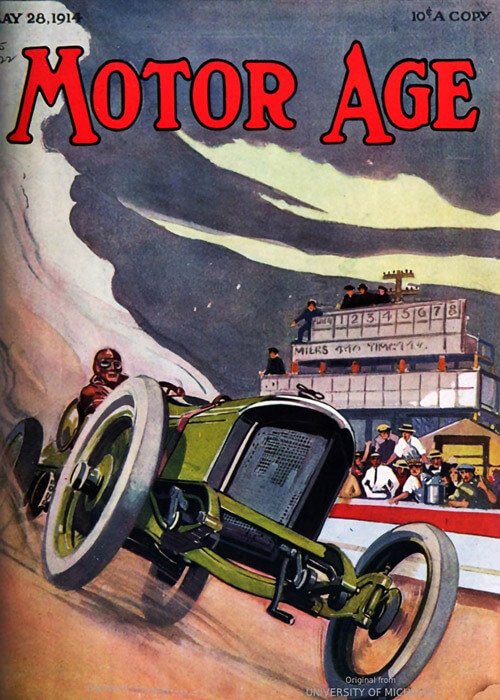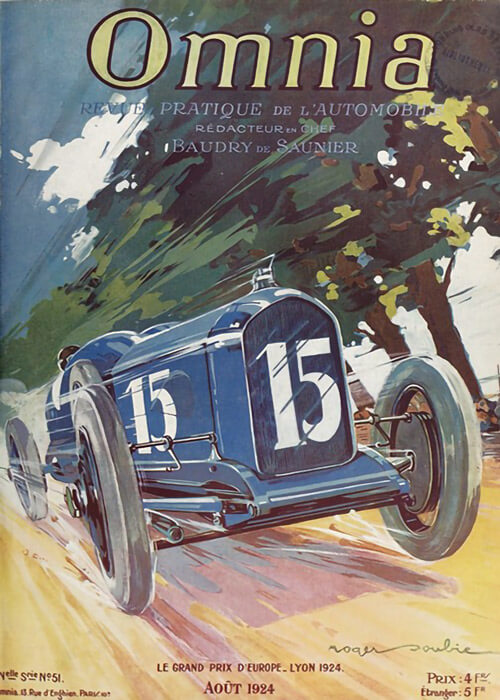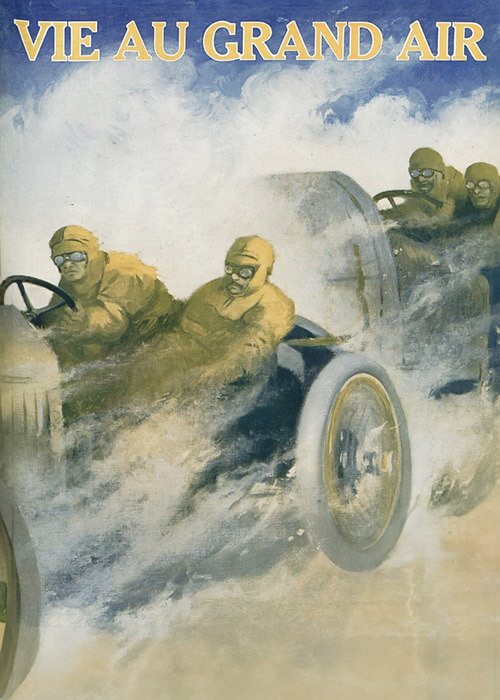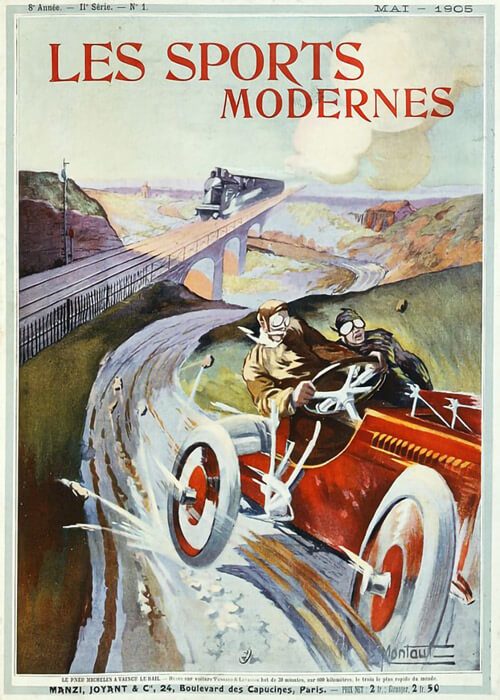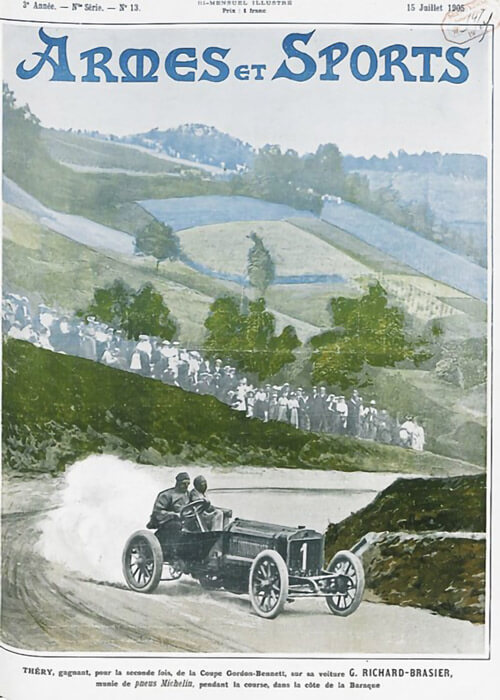The 1925 French Grand Prix was held in Le Mans, the La Sarthe road-track. The first European post-war Grand Prix was won by an American driver in an American car. This report, written by the well-known and long-time American correspondent in France, W. F. Bradley, shows a more or less mixed American-European view on that race.
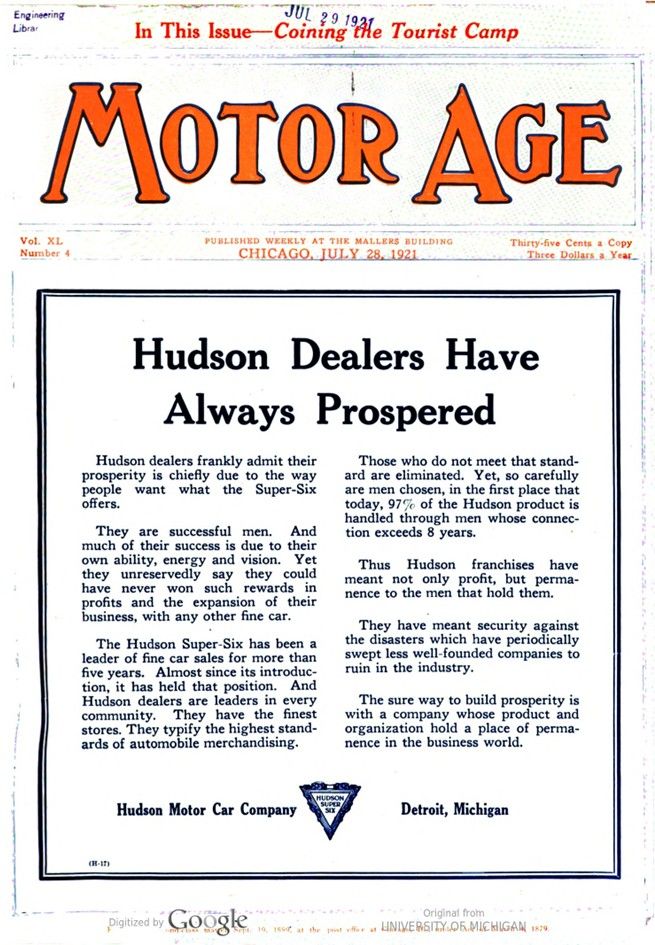
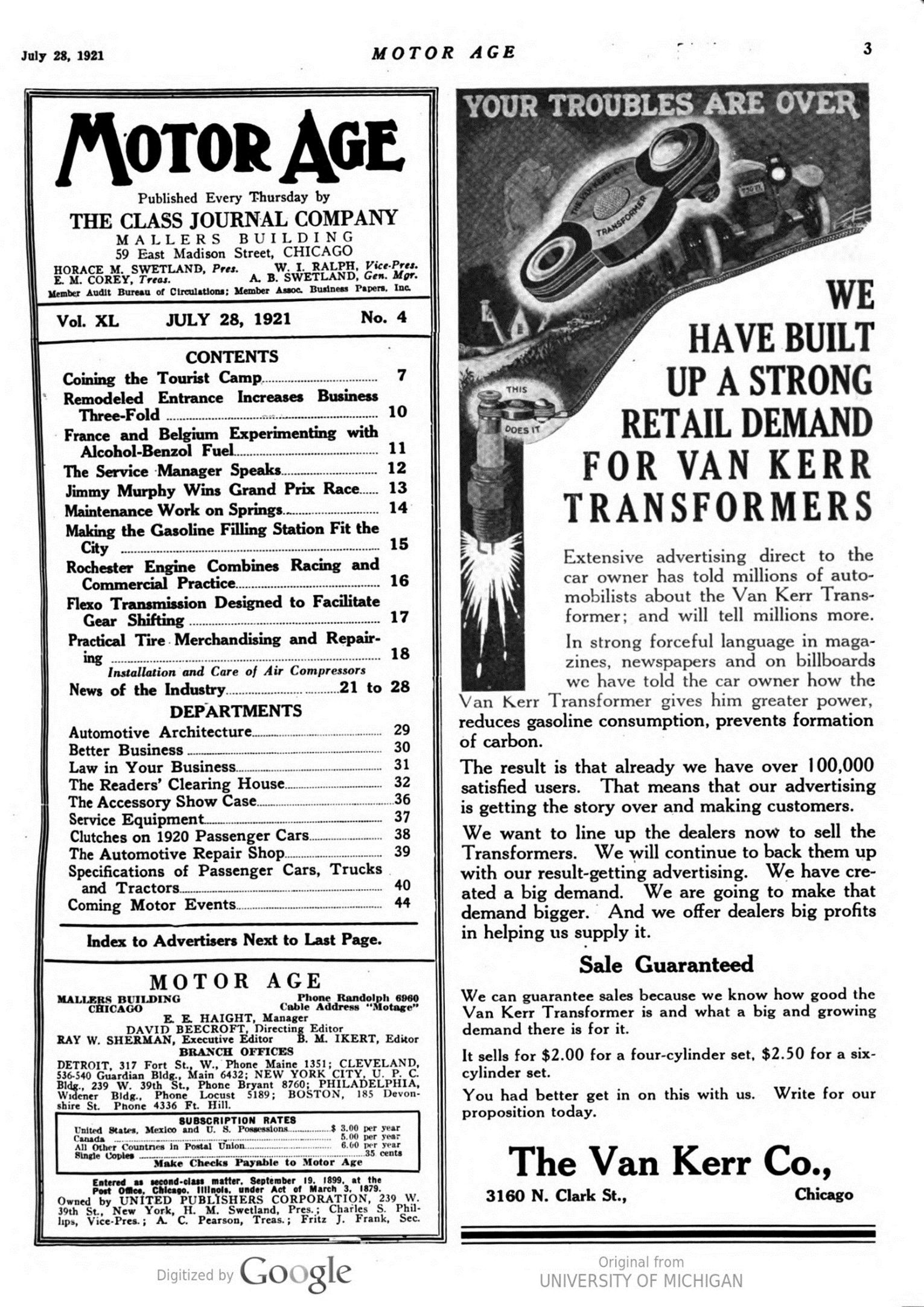

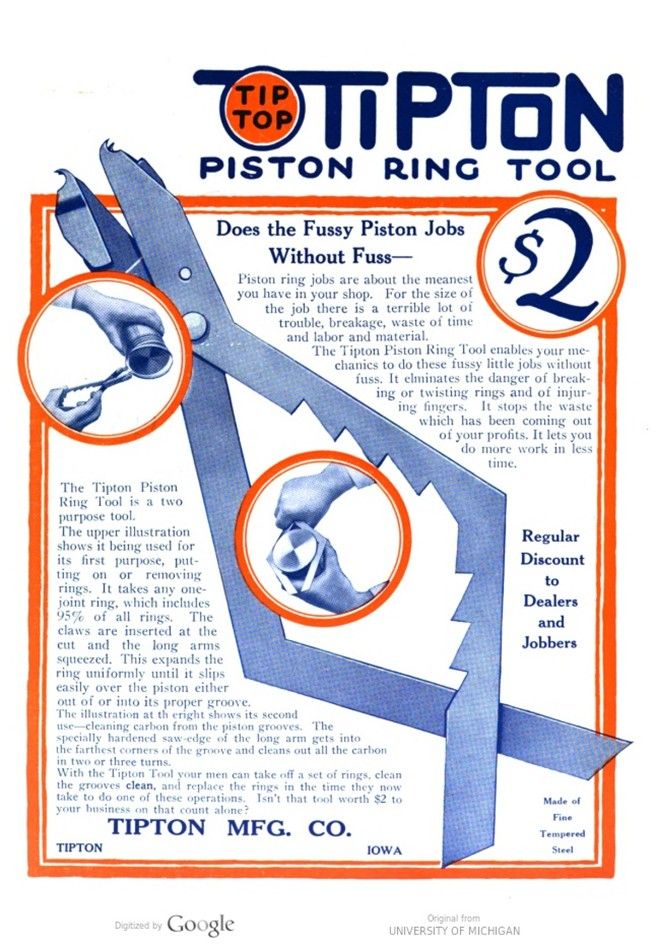
Text and jpegs by courtesy of hathitrust.org www.hathitrust.org, compiled by motorracinghistory.com
MOTOR AGE Vol. XL, No. 4, July 28, 1921
Jimmy Murphy Wins Grand Prix Race
American Driver In a Duesenberg Car Takes First Honors in Great European Classic at Le Mans, France; De Palma Finishes Second
By W. F. Bradley (European Correspondent, Motor Age)
Special Cable to Motor Age
LE MANS, France, July 25 – „Jimmy“ Murphy, youngest driver in the Duesenberg quartette, won the Grand Prix today. This is the first time in the history of this celebrated race that an American car has won. Ralph De Palma, another American, finished second. Guyot (French) was third, but his place may be contested on the grounds that he received aid in changing a tire. The French drivers did not run according to form and there is much disappointment as the result.
Murphy’s time for the 321.78 miles was 4:7:11, or 78.22 m.p.h.
This year’s French Grand Prix automobile race, the first of its kind since 1914, was held on a fast triangular course 10.7 miles long. Thirty laps were necessary, or 321.78 miles. The course is on the outskirts of Le Mans. Although this race is organized by the national body, the Automobile Club of France, the local club at Le Mans has taken an active part in the preparations, and hopes to get permission from the government for the transforming of the set of roads into a permanent speed- way. It is not intended to close the roads to ordinary traffic, but to have permanent stands and pits, barricades and bridges, and to have the right to close the roads whenever speed contests are to be held.
The race was run clockwise, the start being made on a fourth-class road, which had been widened to 40 ft. Two miles from the starting point the racing cars ran into the Pontlieue hairpin turn, which was approached on a slight downgrade and followed by a slight up-grade. Owing to the nature of the road, it had not been possible to bank this, and to prevent excessive wear, most of the surface on the turn was paved with granite blocks.
After the hairpin the course was a national highway for five miles, the road being very wide, dead straight, with the exception of three easy bends, the maximum upgrade being three per cent, the maximum downgrade four per cent, but the greater portion being level.
After a righthand right-angle turn, the cars got into a crossroad through a pine forest. This road, although level, called for a drop into lower gear – second for the Duesenbergs and third for the Europeans and this gear could not be left, owing to the sharp turns, until the first, or grandstand, leg of the course was entered. Coming up towards the grand- stands, a speed of 100 m. p. h. is possible, despite the slight rise. The entire surface was re-laid for the race, and calcium chloride was used as a dust preventive. Nearly the whole of the course was barricaded, and regular army troops were employed to maintain order.
As the French Grand Prix regulations called for a maximum piston displacement of 183 cu. in., (= 3 liter – grocerjack) with a minimum weight of 1,763 lbs. (= 800 kg – grocerjack), practically all makers preferred the 8-cylinder ahead engine. The exceptions confirm the rule. Jules Goux’s Ballot has only four cylinders of 2 liters, or 122 cu. in., displacement, but this car was put in owing to the wreckage of the 8-cylinder car driven by Renard, who was killed while in practice. The Mathis also has four cylinders with a piston displacement of 1½ liters, or about 92 cu. in.
The Ballot cars are on the same general lines as those which came to Indianapolis this year. Ralph De Palma drove the car with which he won most of the lap prizes on the Indianapolis track this year, the engine only having been changed. These cars have been built in the Ballot factory in Paris, to the designs of Engineer Henry, who before the war was head of the Peugeot racing team.
The eight cylinders measure 2.5 by 4.4 in. bore and stroke and have four valves per cylinder, operated by two overhead camshafts, driven by a train of spur pinions at the front, all the pinions having ball bearings. The crankshaft is carried in five ball bearings. Two Claudel carbureters are fitted, ignition being by a Scintilla magneto, with K. L. G. plugs.
Photo captions.
Page 13.
This shows one of the Ballot race cars driven by Louis Wagner in the Grand Prix. The other view was taken along the course
Jimmy Murphy with the winner’s smile
